Abstract
The effects of some halogen-substituted flavanoids (dichloroflavan, halogenated isoflavans, and isoflavenes) on poliovirus type 2 infection was examined. Only two isoflavenes exhibited a significant inhibitory activity on the virus-induced cytopathic effect and plaque formation. In a single cycle of viral replication, both compounds reduced the viral yield by approximately 90%. The presence of the isoflavenes from the beginning of infection or during the adsorption period only prevented the shutoff of host translation and viral RNA and protein synthesis, suggesting that the drugs blocked an early step of viral replication. Indeed, both isoflavenes were not virucidal, did not protect virus infectivity from heat inactivation, and had no measurable effect on the binding of virus to cells, viral penetration, and uncoating of the viral RNA. In contrast, both compounds significantly reduced the infectivity of free viral RNA. The possibility that compounds interfere with poliovirus replication at a very early stage of translation of the input RNA is discussed.
Full text
PDF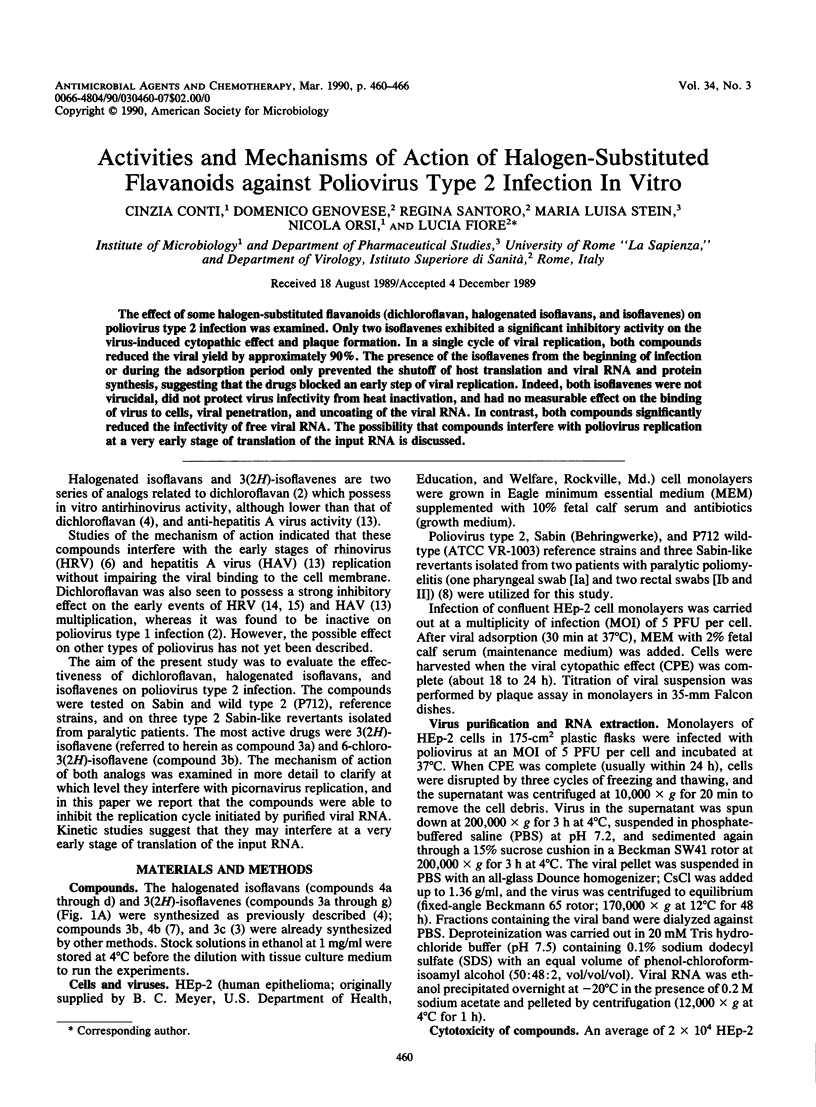
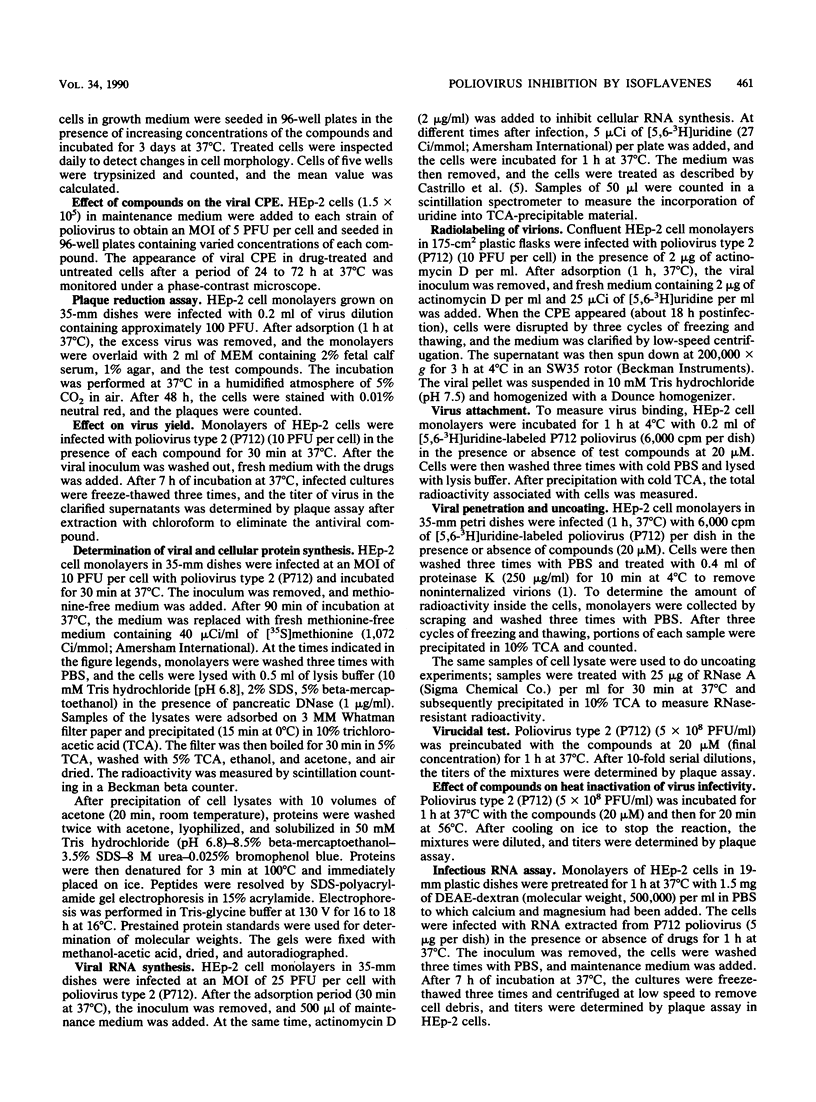
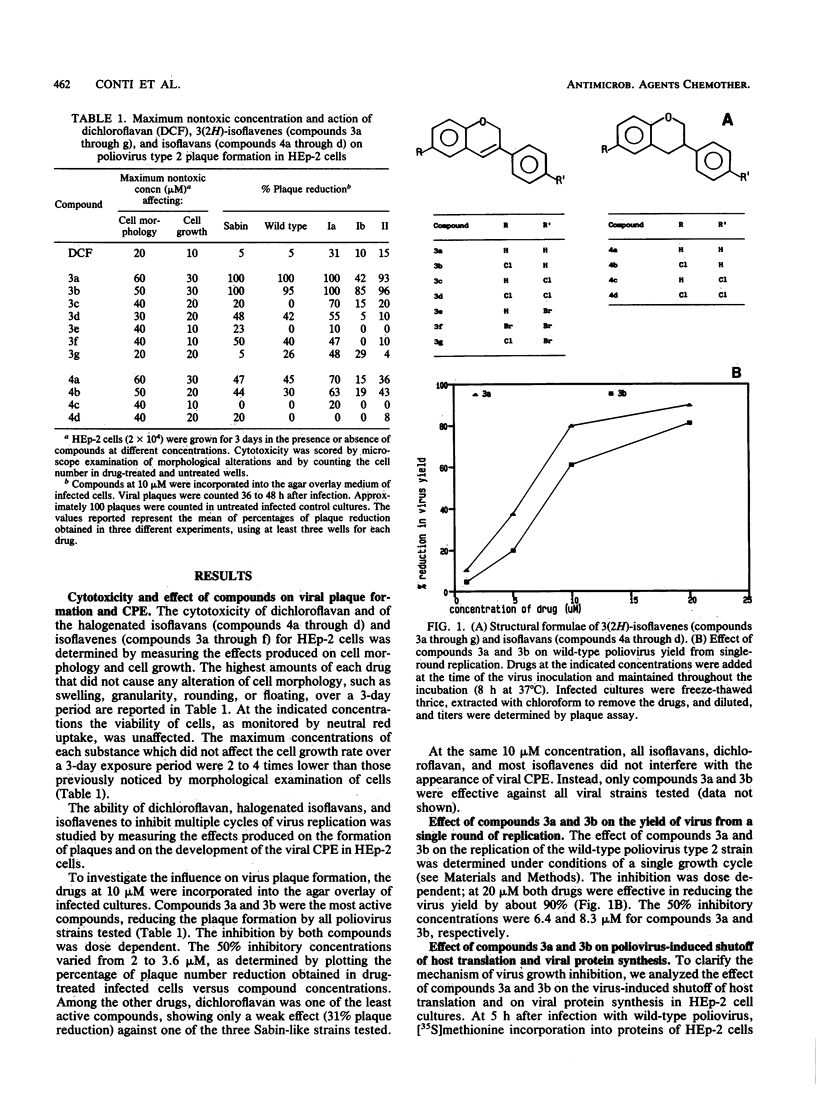
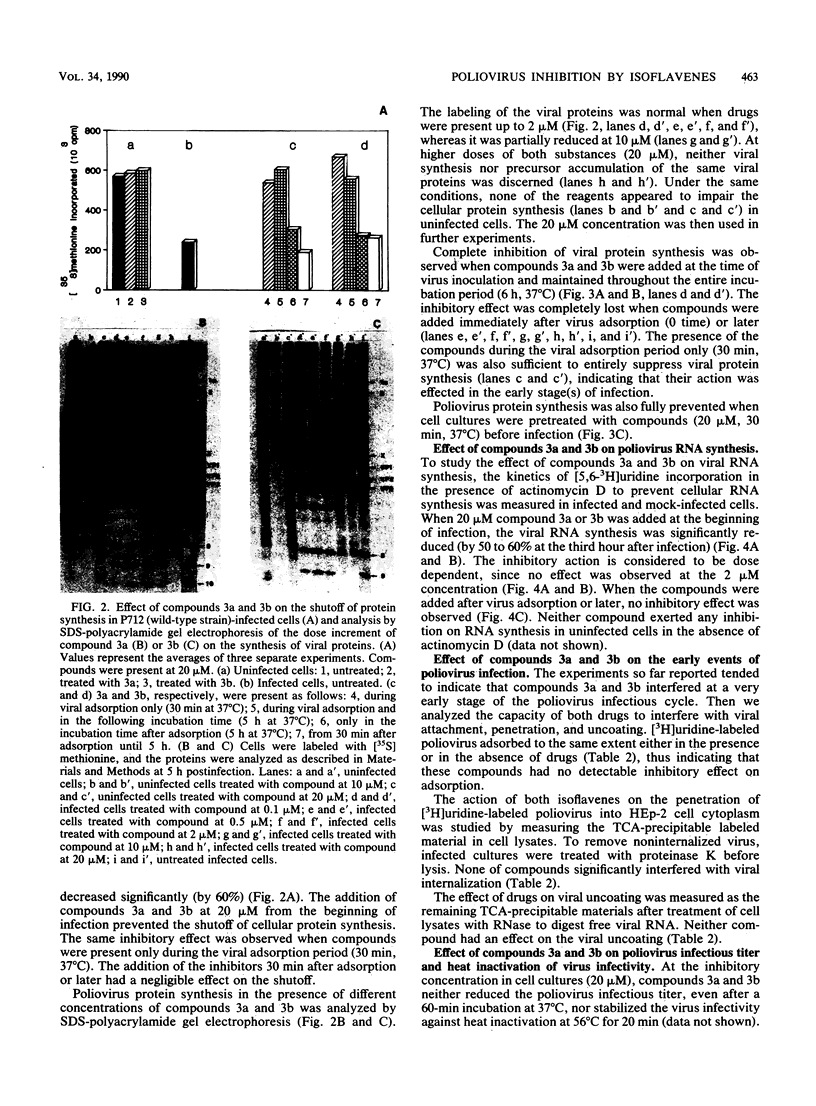
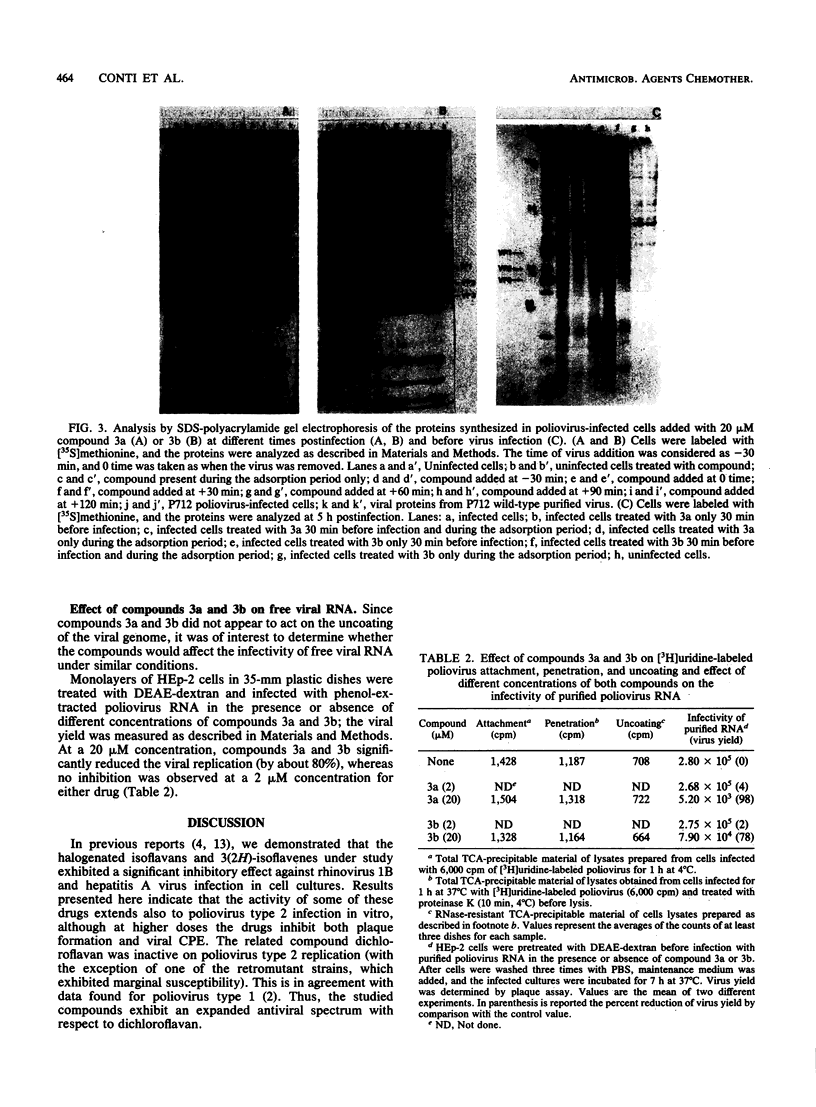
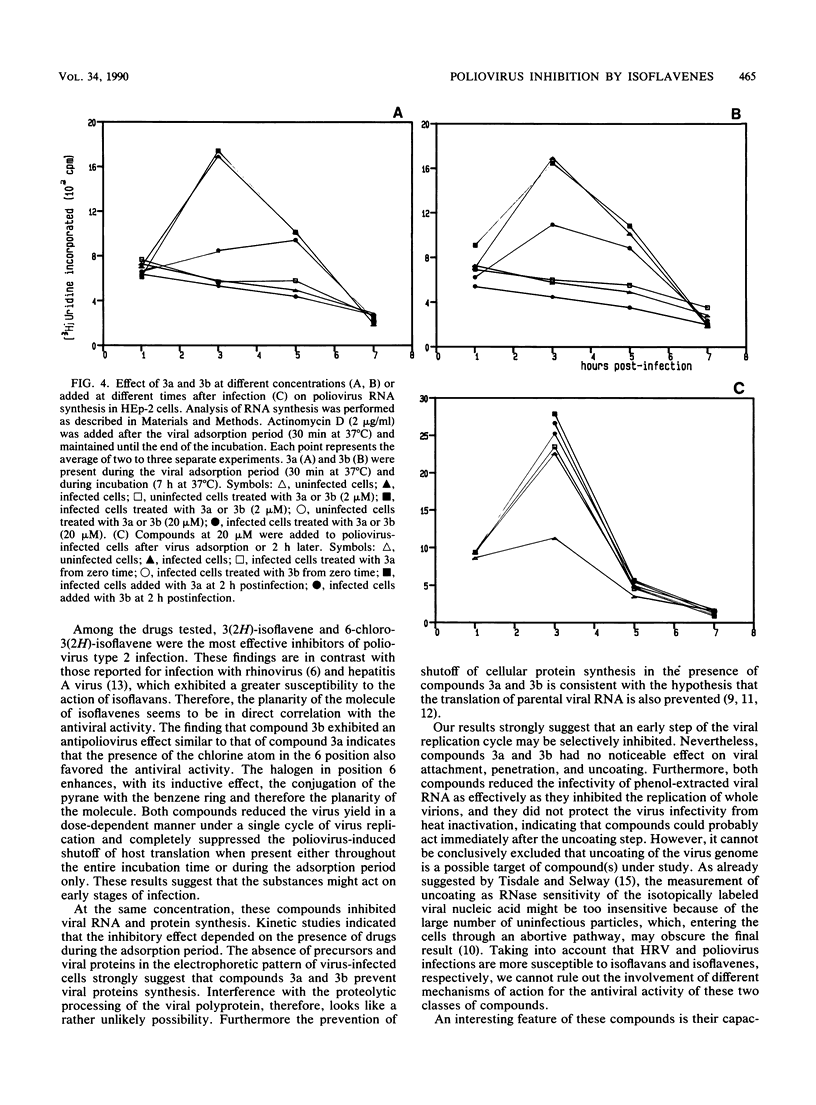
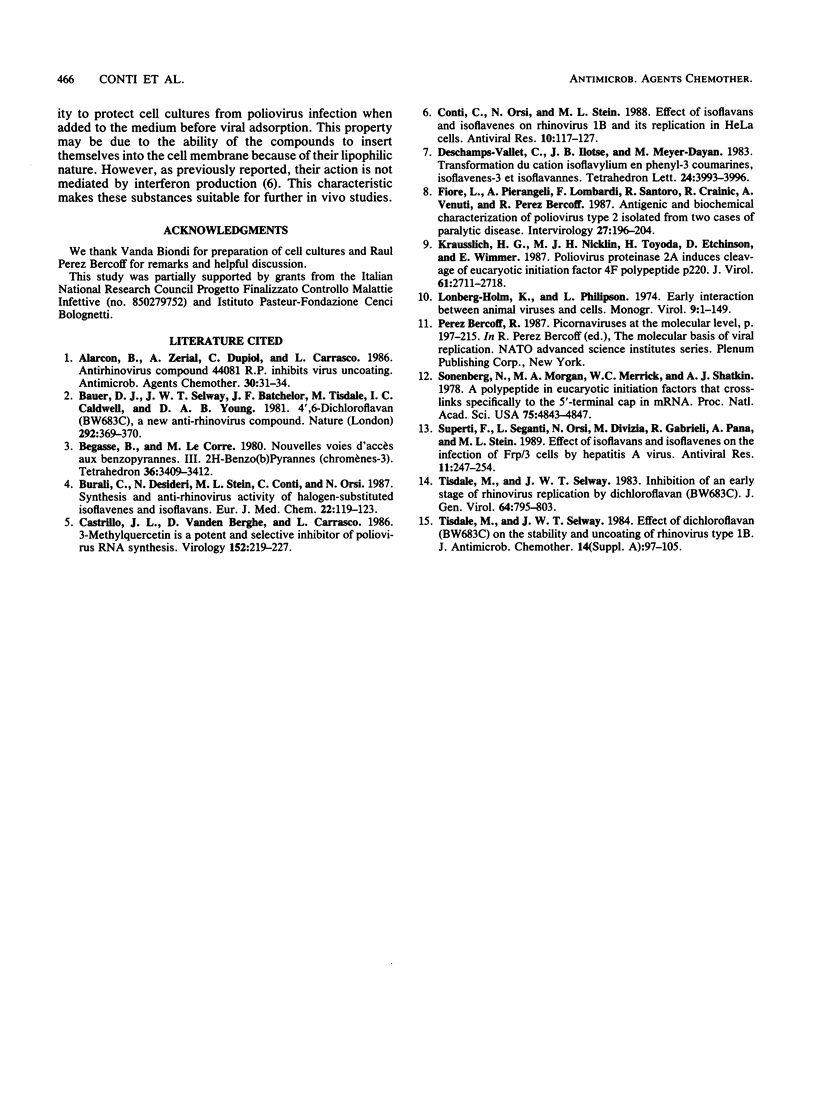
Images in this article
Selected References
These references are in PubMed. This may not be the complete list of references from this article.
- Alarcon B., Zerial A., Dupiol C., Carrasco L. Antirhinovirus compound 44,081 R.P. inhibits virus uncoating. Antimicrob Agents Chemother. 1986 Jul;30(1):31–34. doi: 10.1128/aac.30.1.31. [DOI] [PMC free article] [PubMed] [Google Scholar]
- Bauer D. J., Selway J. W., Batchelor J. F., Tisdale M., Caldwell I. C., Young D. A. 4',6-Dichloroflavan (BW683C), a new anti-rhinovirus compound. Nature. 1981 Jul 23;292(5821):369–370. doi: 10.1038/292369a0. [DOI] [PMC free article] [PubMed] [Google Scholar]
- Castrillo J. L., Vanden Berghe D., Carrasco L. 3-Methylquercetin is a potent and selective inhibitor of poliovirus RNA synthesis. Virology. 1986 Jul 15;152(1):219–227. doi: 10.1016/0042-6822(86)90386-7. [DOI] [PubMed] [Google Scholar]
- Conti C., Orsi N., Stein M. L. Effect of isoflavans and isoflavenes on rhinovirus 1B and its replication in HeLa cells. Antiviral Res. 1988 Nov;10(1-3):117–127. doi: 10.1016/0166-3542(88)90020-4. [DOI] [PubMed] [Google Scholar]
- Fiore L., Pierangeli A., Lombardi F., Santoro R., Crainic R., Venuti A., Perez-Bercoff R. Antigenic and biochemical characterization of poliovirus type 2 isolated from two cases of paralytic disease. Intervirology. 1987;27(4):196–204. doi: 10.1159/000149985. [DOI] [PubMed] [Google Scholar]
- Kräusslich H. G., Nicklin M. J., Toyoda H., Etchison D., Wimmer E. Poliovirus proteinase 2A induces cleavage of eucaryotic initiation factor 4F polypeptide p220. J Virol. 1987 Sep;61(9):2711–2718. doi: 10.1128/jvi.61.9.2711-2718.1987. [DOI] [PMC free article] [PubMed] [Google Scholar]
- Lonberg-Holm K., Philipson L. Early interaction between animal viruses and cells. Monogr Virol. 1974;9:1–148. [PubMed] [Google Scholar]
- Sonenberg N., Morgan M. A., Merrick W. C., Shatkin A. J. A polypeptide in eukaryotic initiation factors that crosslinks specifically to the 5'-terminal cap in mRNA. Proc Natl Acad Sci U S A. 1978 Oct;75(10):4843–4847. doi: 10.1073/pnas.75.10.4843. [DOI] [PMC free article] [PubMed] [Google Scholar]
- Superti F., Seganti L., Orsi N., Divizia M., Gabrieli R., Panà A., Stein M. L. Effect of isoflavans and isoflavenes on the infection of Frp/3 cells by hepatitis A virus. Antiviral Res. 1989 Jun-Jul;11(5-6):247–254. doi: 10.1016/0166-3542(89)90034-x. [DOI] [PubMed] [Google Scholar]
- Tisdale M., Selway J. W. Effect of dichloroflavan (BW683C) on the stability and uncoating of rhinovirus type 1B. J Antimicrob Chemother. 1984 Aug;14 (Suppl A):97–105. doi: 10.1093/jac/14.suppl_a.97. [DOI] [PubMed] [Google Scholar]
- Tisdale M., Selway J. W. Inhibition of an early stage of rhinovirus replication by dichloroflavan (BW683C). J Gen Virol. 1983 Apr;64(Pt 4):795–803. doi: 10.1099/0022-1317-64-4-795. [DOI] [PubMed] [Google Scholar]




